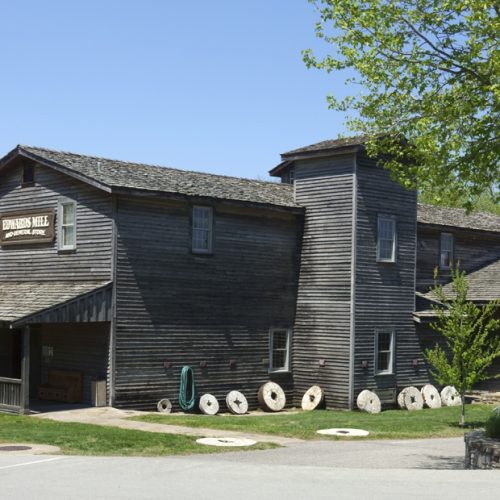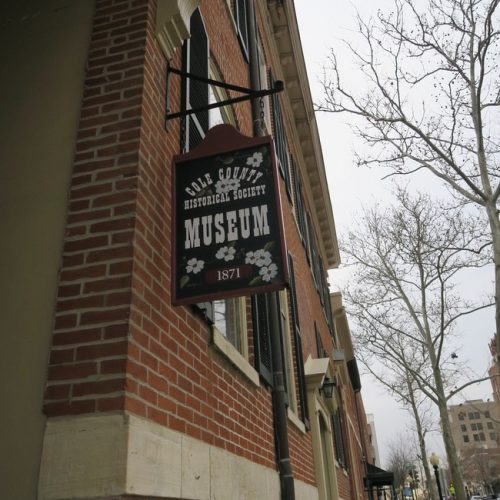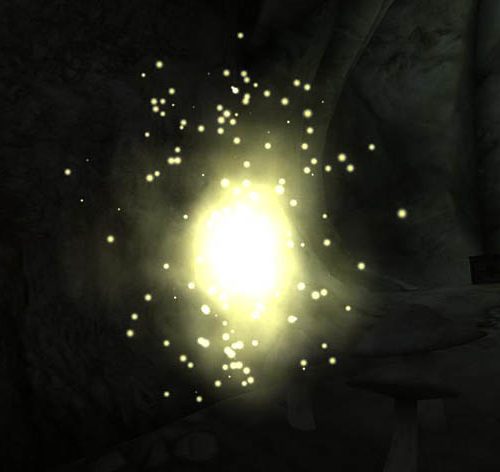There may be bats in the belfry somewhere in the Ozarks, but the Devil’s got bats in his icebox.
In my quest to visit the sites in the Ozarks named after the Devil, I went to Rock Bridge Memorial State Park. The Devil’s Icebox is actually a sinkhole, part of a cave system running for several miles underground. The park brochure claims the Icebox is “the park’s most impressive geological feature.”
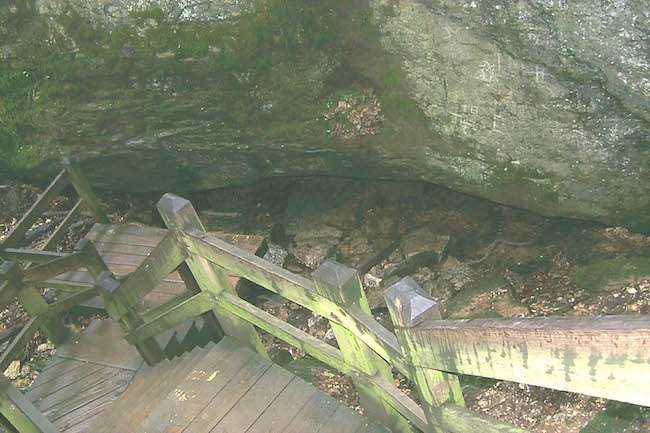 As I hunkered down at the entrance of the cave, I couldn’t help but think about what Tom Beveridge wrote in “Geologic Wonders and Curiosities of Missouri” when he recalled how in 1924 a father and son team went on a 24-hour, seven mile hike in the underground cave. According to Beveridge, this was the first recorded expedition in the Devil’s Icebox.
As I hunkered down at the entrance of the cave, I couldn’t help but think about what Tom Beveridge wrote in “Geologic Wonders and Curiosities of Missouri” when he recalled how in 1924 a father and son team went on a 24-hour, seven mile hike in the underground cave. According to Beveridge, this was the first recorded expedition in the Devil’s Icebox.
The father-son duo had plenty of company during their exploration, as do present-day cave explorers in the Icebox. Five species of bats, including the endangered gray bat, live in the passages. In fact, a sign near the cave entrance has a photograph of a five-foot pile of bat guano from inside the cave.
Since the bats mate and then roost in the cave from April through August, the cave is now closed for tours. When I noticed in the photographs at the entrance to the cave that explorers have to lie flat in a canoe for part of the first half-mile of the trip–noses practically pressed against the bats on the ceiling—I was not disappointed about being denied access to the cave.
In fact, this cave sounds as though it is not for the faint-of-heart spelunker.
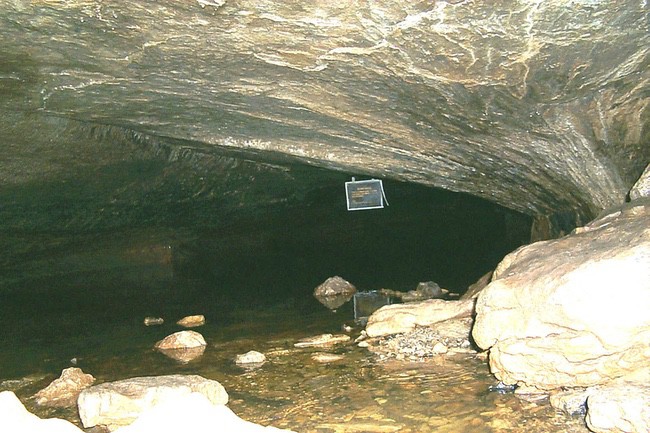 Not only does the park contain the Devil’s Icebox, it also has a 63-foot rock bridge made of Burlington limestone. Here is a note for trivia lovers: limestone from this formation was used to construct the Columns at the University of Missouri-Columbia. The bridge is all that remains of a huge cave ceiling before portions of it collapsed.
Not only does the park contain the Devil’s Icebox, it also has a 63-foot rock bridge made of Burlington limestone. Here is a note for trivia lovers: limestone from this formation was used to construct the Columns at the University of Missouri-Columbia. The bridge is all that remains of a huge cave ceiling before portions of it collapsed.
Beveridge wrote that the underside of the bridge area (actually a short tunnel) reminds him of a chapel: “The main tunnel forms the nave and apse and an interesting cave system forms the transept, or arms of the cross, thus causing a widening out of the tunnel.”
In fact, it is not difficult to put the old imagination into play, since the stream was once dammed and used to power a gristmill. After the gristmill, the first paper mill west of the Mississippi was built at this site. The rock dam is still there, and foundations of old buildings that once formed the community of Pierpont (French for rock bridge) lie scattered around the stream sides.
Numerous trails, some on a boardwalk system, run throughout the park. Some trails take you to ridge tops, while others make it easy for you to explore the Icebox sinkhole without being ankle-deep in mud. It would be easy to spend a whole day on trails, and with names such as the High Ridge Trail, the Deer Run Trail and the Spring Brook Trail, you might get the idea that a good pair of boots are in order.
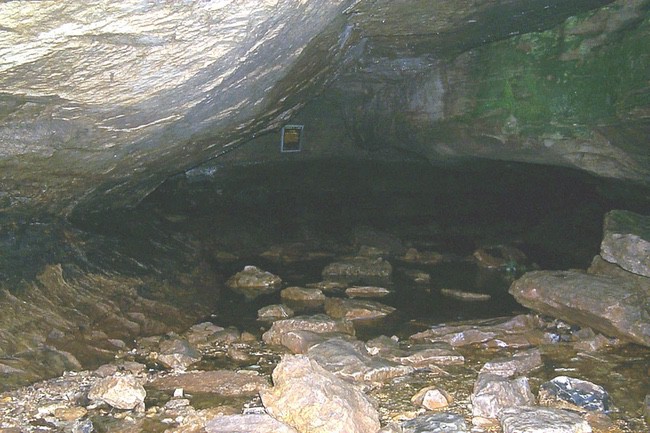 My kids want to go back to see the Hog’s Graveyard cave and Polly’s Pot Cave. I wonder if these caves are homes to bats as well, or if they all check in over at the Devil’s Icebox? I’ll let you know.
My kids want to go back to see the Hog’s Graveyard cave and Polly’s Pot Cave. I wonder if these caves are homes to bats as well, or if they all check in over at the Devil’s Icebox? I’ll let you know.
Rock Bridge Memorial State Park is located off Highway 163, about four miles south of Columbia. For more information about Rock Bridge Memorial State Park, check its website. As of Aug. 2019, the Department of Natural Resources stated, “The wild cave tours have been suspended until further notice to protect the bats within Devil’s Icebox Cave from white nose syndrome, caused by a fungus that affects bats but not humans.”

